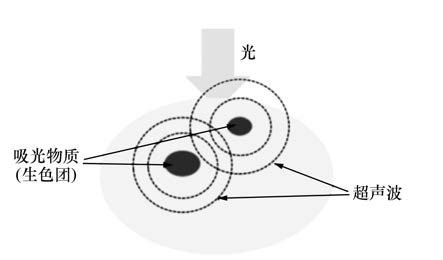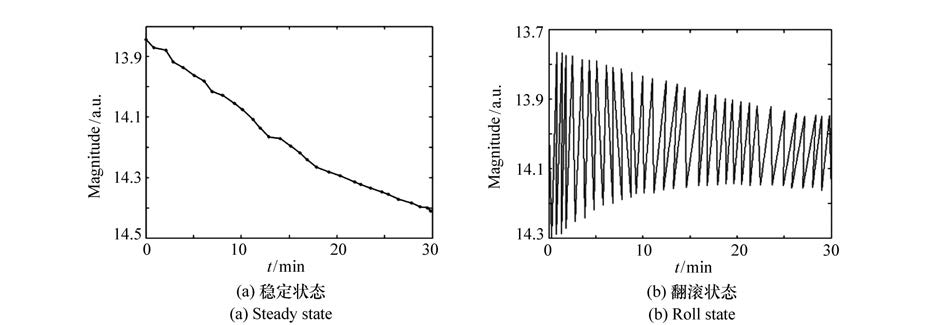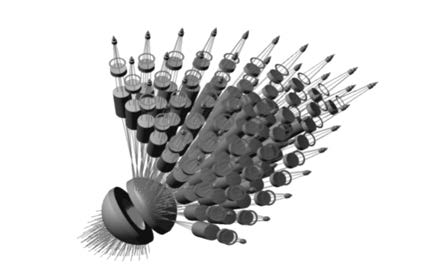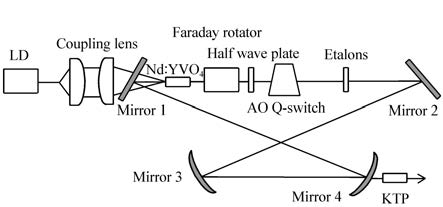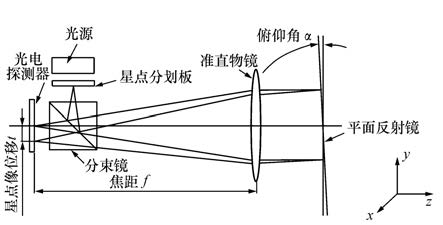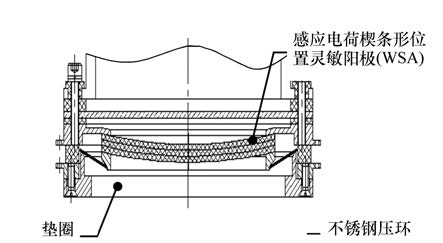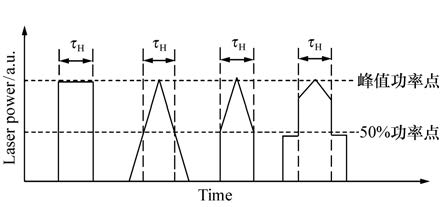2015 Vol. 8, No. 5
2015, 8(5): 679-698.
doi: 10.3788/CO.20150805.0699
Abstract:
Aerosol is considered to be one of many uncertainties which affect the Earth's climates and environments. Space-borne passive optical remote sensor with large field of view, wide-band and high spatial resolution has become an effective means to realize cloud and aerosol detection from space. After summarizing necessities and feasibilities of optical sensor for cloud and aerosol remote sensing, system components, technical parameters and characteristics of typical optical sensors for cloud and aerosol remote sensing are introduced in detail. Deficiencies of current instruments and real needs of aerosol retrieval are analyzed, and the development tendency of instruments for cloud and aerosol remote sensing from space is indicated. Finally, a new cloud and aerosol remote sensing instrument architecture is envisioned. Integration of large field, medium-resolution, multi-angle, multi-spectral, wide-spectrum and high accuracy polarimetric sensing approaches into a single instrument with long life would be the best choice for new generation optical remote sensor for cloud and aerosol from space.
Aerosol is considered to be one of many uncertainties which affect the Earth's climates and environments. Space-borne passive optical remote sensor with large field of view, wide-band and high spatial resolution has become an effective means to realize cloud and aerosol detection from space. After summarizing necessities and feasibilities of optical sensor for cloud and aerosol remote sensing, system components, technical parameters and characteristics of typical optical sensors for cloud and aerosol remote sensing are introduced in detail. Deficiencies of current instruments and real needs of aerosol retrieval are analyzed, and the development tendency of instruments for cloud and aerosol remote sensing from space is indicated. Finally, a new cloud and aerosol remote sensing instrument architecture is envisioned. Integration of large field, medium-resolution, multi-angle, multi-spectral, wide-spectrum and high accuracy polarimetric sensing approaches into a single instrument with long life would be the best choice for new generation optical remote sensor for cloud and aerosol from space.
2015, 8(5): 699-713.
doi: 10.3788/CO.20150805.0679
Abstract:
Photoacoustic imaging has obtained the widespread attention in the world due to its high resolution, high contrast and deep imaging depth etc. This paper describes the principles of photoacoustic imaging, the process of its generation, propagation and detection, reconstruction algorithms and its applications in clinical medicine, and also summarizes the progress of photoacoustic imaging, as well as their individual features. According to the analysis, photoacoustic imaging is thought to have many advantages, which other medical imaging techniques do not have, as well as a broad application prospect and high application value. And in the future, photoacoustic imaging will become one of the most important biomedical imaging techniques, and make outstanding contributions for the realization of real-time medical imaging.
Photoacoustic imaging has obtained the widespread attention in the world due to its high resolution, high contrast and deep imaging depth etc. This paper describes the principles of photoacoustic imaging, the process of its generation, propagation and detection, reconstruction algorithms and its applications in clinical medicine, and also summarizes the progress of photoacoustic imaging, as well as their individual features. According to the analysis, photoacoustic imaging is thought to have many advantages, which other medical imaging techniques do not have, as well as a broad application prospect and high application value. And in the future, photoacoustic imaging will become one of the most important biomedical imaging techniques, and make outstanding contributions for the realization of real-time medical imaging.
2015, 8(5): 714-724.
doi: 10.3788/CO.20150805.0714
Abstract:
The application of remote sensing technology to the mapping is the development trend of modern geological mapping technology. With the increasing resolution of optical load, mapping remote sensor has become an important guarantee for social development and the development of the national economy. Optical load which is the core component of remote sensor determines the resolution of mapping space remote sensor, the precision of mapping, and the volume and weight of the satellite platform. Structure and optical properties of the mapping space remote sensor optical system are introduced, such as high image quality refractive system, co-axial three mirrors system and off-axial three mirrors system. Then, structure and optical properties of new space reflective optical system in development are prospected. Analysis result indicates that according to different application environment and technical index, different types of optical system should be selected reasonably, so the platform resources can be used fully to meet the demand of mapping remote sensor.
The application of remote sensing technology to the mapping is the development trend of modern geological mapping technology. With the increasing resolution of optical load, mapping remote sensor has become an important guarantee for social development and the development of the national economy. Optical load which is the core component of remote sensor determines the resolution of mapping space remote sensor, the precision of mapping, and the volume and weight of the satellite platform. Structure and optical properties of the mapping space remote sensor optical system are introduced, such as high image quality refractive system, co-axial three mirrors system and off-axial three mirrors system. Then, structure and optical properties of new space reflective optical system in development are prospected. Analysis result indicates that according to different application environment and technical index, different types of optical system should be selected reasonably, so the platform resources can be used fully to meet the demand of mapping remote sensor.
2015, 8(5): 725-735.
doi: 10.3788/CO.20150805.0725
Abstract:
Driven by application requirements and the development of hyper spectral technology, atmospheric total column CO2 monitoring using passive space borne high resolution spectrometry has become a very active research field. In this paper, we introduce the requirements for satellite observation of CO2 in scientific and social development, and analyze the advantages and disadvantages of space-based CO2 measurement, and provide an overview of the research mission and progress of the latest international Orbiting Carbon Observatory-2(OCO-2, launched by NASA in July 2014) and Greenhouse Gases Observing Satellite(GOSAT,launched in January 2009), including instrument specifications, observing modes, calibration modes, and especially focus on the requirement accuracy of calibration and several kinds of in-orbit calibration modes. From the perspective of application and data processing, CO2 detection technology between grating and Fourier transform method for interference are briefly compared. In addition, the quantitative inversion principle and future development of this field are also presented at the end of this paper.
Driven by application requirements and the development of hyper spectral technology, atmospheric total column CO2 monitoring using passive space borne high resolution spectrometry has become a very active research field. In this paper, we introduce the requirements for satellite observation of CO2 in scientific and social development, and analyze the advantages and disadvantages of space-based CO2 measurement, and provide an overview of the research mission and progress of the latest international Orbiting Carbon Observatory-2(OCO-2, launched by NASA in July 2014) and Greenhouse Gases Observing Satellite(GOSAT,launched in January 2009), including instrument specifications, observing modes, calibration modes, and especially focus on the requirement accuracy of calibration and several kinds of in-orbit calibration modes. From the perspective of application and data processing, CO2 detection technology between grating and Fourier transform method for interference are briefly compared. In addition, the quantitative inversion principle and future development of this field are also presented at the end of this paper.
2015, 8(5): 736-743.
doi: 10.3788/CO.20150805.0736
Abstract:
The principle, characteristics and necessity of vacuum ultraviolet wavefront-division Fourier transform spectrometry are analyzed in this paper. The typical structures, performances, and applications of several spectrometers using vacuum ultraviolet wavefront-division Fourier transform spectrometry are introduced. The future development of domestic vacuum ultraviolet wavefront-division Fourier transform spectrometry is discussed. Another approach is offered for obtaining high resolution vacuum ultraviolet spectra.
The principle, characteristics and necessity of vacuum ultraviolet wavefront-division Fourier transform spectrometry are analyzed in this paper. The typical structures, performances, and applications of several spectrometers using vacuum ultraviolet wavefront-division Fourier transform spectrometry are introduced. The future development of domestic vacuum ultraviolet wavefront-division Fourier transform spectrometry is discussed. Another approach is offered for obtaining high resolution vacuum ultraviolet spectra.
2015, 8(5): 744-754.
doi: 10.3788/CO.20150805.0744
Abstract:
Shape and attitude estimation based on lightcurve inversion provide a new technological approach for space target surveillance systems. Firstly, the necessity of space target information inversion based on lightcurve is discussed. Secondly, the performance of the main three methods of shape estimation are comprehensively summarized, and the method of shape estimation based on nonlinear filter technology is the main development direction in the future. Then, the advantages and disadvantages of nonlinear filter technology are analyzed. Finally, aiming at the problem of inversion, we point out the next research and development direction of fusing multiple sensor information based on the particle filter algorithm with better real-time performance to inverse more complex geometrical shape and surface materials of space target.
Shape and attitude estimation based on lightcurve inversion provide a new technological approach for space target surveillance systems. Firstly, the necessity of space target information inversion based on lightcurve is discussed. Secondly, the performance of the main three methods of shape estimation are comprehensively summarized, and the method of shape estimation based on nonlinear filter technology is the main development direction in the future. Then, the advantages and disadvantages of nonlinear filter technology are analyzed. Finally, aiming at the problem of inversion, we point out the next research and development direction of fusing multiple sensor information based on the particle filter algorithm with better real-time performance to inverse more complex geometrical shape and surface materials of space target.
2015, 8(5): 755-767.
doi: 10.3788/CO.20150805.0755
Abstract:
Photoelectric encoder is a kind of numerical high-precision angle-measuring device, which is grandly applied in modern automation system. In order to do in-depth research and improve detection efficiency in photoelectric encoder fault diagnosis, the classification and operating principle of photoelectric encoder are introduced firstly in this paper. Moreover, current developing situation for encoder fault diagnosis method at home and abroad is presented and typical encoder fault diagnosis methods are compared. The advantages and disadvantages of each fault diagnosis technology are summaried. Finally, the trend of automation, portability, dynamic detection, multi-technology fusion and fault prediction in photoelectric encoder is proposed.
Photoelectric encoder is a kind of numerical high-precision angle-measuring device, which is grandly applied in modern automation system. In order to do in-depth research and improve detection efficiency in photoelectric encoder fault diagnosis, the classification and operating principle of photoelectric encoder are introduced firstly in this paper. Moreover, current developing situation for encoder fault diagnosis method at home and abroad is presented and typical encoder fault diagnosis methods are compared. The advantages and disadvantages of each fault diagnosis technology are summaried. Finally, the trend of automation, portability, dynamic detection, multi-technology fusion and fault prediction in photoelectric encoder is proposed.
2015, 8(5): 768-774.
doi: 10.3788/CO.20150805.0768
Abstract:
For the lack of top-down task guidance and dynamic information processing of traditional visual saliency model, a visual saliency model fused with the motion features is designed and implemented. The static features and motion features are extracted based on the proposed model. The static features are extracted from the intensity, color and orientation channel of the current frame image. The motion features are extracted based on the multi-scales difference method. The saliency maps of four channels can be obtained by filtering and difference. Based on the proposed model a method of parameter estimation for multi channel is proposed to calculate the similarity between the region of interesting of current image and the region of interesting of eyes movement, then guide to generate the global saliency map, which can provide a calculation mechanism for accurate location on images. 20 groups of video image sequences(50 images per group) are selected for the experiment. Experimental results show that the average similarity of focus of attention is 0.87. The proposed method can more efficiently and accurately locate the region where the searched target may be present and can improve the efficiency of target searching.
For the lack of top-down task guidance and dynamic information processing of traditional visual saliency model, a visual saliency model fused with the motion features is designed and implemented. The static features and motion features are extracted based on the proposed model. The static features are extracted from the intensity, color and orientation channel of the current frame image. The motion features are extracted based on the multi-scales difference method. The saliency maps of four channels can be obtained by filtering and difference. Based on the proposed model a method of parameter estimation for multi channel is proposed to calculate the similarity between the region of interesting of current image and the region of interesting of eyes movement, then guide to generate the global saliency map, which can provide a calculation mechanism for accurate location on images. 20 groups of video image sequences(50 images per group) are selected for the experiment. Experimental results show that the average similarity of focus of attention is 0.87. The proposed method can more efficiently and accurately locate the region where the searched target may be present and can improve the efficiency of target searching.
2015, 8(5): 775-784.
doi: 10.3788/CO.20150805.0775
Abstract:
Due to the characteristic of images in laser active imaging, a novel target recognition method based on fast contour torque features(FCTF) is proposed. The concept of torque is introduced into target recognition. The proposed fast contour torque features contain abundant information such as the size, position, shape regularly of the contours and darkness of the target, which are as well invariant to rotation and scaling. Meanwhile the fast calculation method greatly improves the computational efficiency. Firstly feature regions are detected using Maximally Stable Extremal Regions(MSER) algorithm, and transformed into circular areas. Then local invariant features of the feature regions are extracted by fast contour torque feature descriptor. At last the features are input into the trained Suppor Vector Machine(SVM) classifier for identification. The experimental results indicate that compared with the existing laser active imaging recognition algorithms, the proposed method acquires higher recognition rate in rotation and affine transformation, and the average computing time of single frame is 9.68 ms, which meet the real-time requirement in laser active imaging.
Due to the characteristic of images in laser active imaging, a novel target recognition method based on fast contour torque features(FCTF) is proposed. The concept of torque is introduced into target recognition. The proposed fast contour torque features contain abundant information such as the size, position, shape regularly of the contours and darkness of the target, which are as well invariant to rotation and scaling. Meanwhile the fast calculation method greatly improves the computational efficiency. Firstly feature regions are detected using Maximally Stable Extremal Regions(MSER) algorithm, and transformed into circular areas. Then local invariant features of the feature regions are extracted by fast contour torque feature descriptor. At last the features are input into the trained Suppor Vector Machine(SVM) classifier for identification. The experimental results indicate that compared with the existing laser active imaging recognition algorithms, the proposed method acquires higher recognition rate in rotation and affine transformation, and the average computing time of single frame is 9.68 ms, which meet the real-time requirement in laser active imaging.
2015, 8(5): 785-793.
doi: 10.3788/CO.20150805.0785
Abstract:
In order to meet the requirement of the engineering application about the real-time image processing, according to the one billion pixel transient cloud imaging system which has been designed based on the combined structure of a concentric spherical lens and micro camera mosaic array, an adaptive image mosaic algorithm of parallel acceleration based on the compute unified device architecture(CUDA) and prior information has been proposed. First, the imaging overlap region of the adjacent micro camera has been calibrated with high-precision four-axe calibration table, and the speed-up robust features(SURF) method has been used to extract the candidate feature points of the overlap region. Then, the approximate nearest neighbor(ANN) search algorithm based on random K-D tree which has been accelerated by the CUDA basic linear algebra subroutines(CUBLAS) is used to obtain the initial matching points. Finally, the improved parallel progressive sample consensus(IPROSAC) algorithm is used to eliminate the false matching points and estimate the parameters of the space transformation matrix, and the spatial geometry transformation relationship has been obtained about mosaic images. Experimental results indicate that the image mosaic time is 287 ms and the speed is improved about 30 times compared with serial algorithm using CPU.
In order to meet the requirement of the engineering application about the real-time image processing, according to the one billion pixel transient cloud imaging system which has been designed based on the combined structure of a concentric spherical lens and micro camera mosaic array, an adaptive image mosaic algorithm of parallel acceleration based on the compute unified device architecture(CUDA) and prior information has been proposed. First, the imaging overlap region of the adjacent micro camera has been calibrated with high-precision four-axe calibration table, and the speed-up robust features(SURF) method has been used to extract the candidate feature points of the overlap region. Then, the approximate nearest neighbor(ANN) search algorithm based on random K-D tree which has been accelerated by the CUDA basic linear algebra subroutines(CUBLAS) is used to obtain the initial matching points. Finally, the improved parallel progressive sample consensus(IPROSAC) algorithm is used to eliminate the false matching points and estimate the parameters of the space transformation matrix, and the spatial geometry transformation relationship has been obtained about mosaic images. Experimental results indicate that the image mosaic time is 287 ms and the speed is improved about 30 times compared with serial algorithm using CPU.
2015, 8(5): 794-799.
doi: 10.3788/CO.20150805.0794
Abstract:
A compact all-solid-state intracavity sum-frequency mixing laser at 608.1 nm is reported. A Nd: YAG crystal and a Nd: YVO4 crystal are pumped by two laser diodes respectively in two sub-arms of the laser cavity. In the two arms, laser wavelengths of 1 342 nm from Nd: YVO4 crystal(corresponding to the 4F3/2-4I13/2 transition) and 1 112 nm from Nd: YAG crystal(corresponding to the 4F3/2-4I11/2 transition) are selected to be mixed into 608.1 nm laser. Through optimization of the cavity design, better matching of the modes for the two wavelengths is obtained. In the overlapping of the two arms, sum-frequency mixing is generated with a type I phase-matching LBO crystal. The experiment result shows that a stable and low noisy output of 23.8 mW at 608.1 nm is obtained at the incident pump power of 740 mW for the Nd: YAG crystal and 600 mW for the Nd: YVO4 crystal. It is an efficient way to obtain 608.1 nm laser with the sum-frequency mixing structure proposed in this article.
A compact all-solid-state intracavity sum-frequency mixing laser at 608.1 nm is reported. A Nd: YAG crystal and a Nd: YVO4 crystal are pumped by two laser diodes respectively in two sub-arms of the laser cavity. In the two arms, laser wavelengths of 1 342 nm from Nd: YVO4 crystal(corresponding to the 4F3/2-4I13/2 transition) and 1 112 nm from Nd: YAG crystal(corresponding to the 4F3/2-4I11/2 transition) are selected to be mixed into 608.1 nm laser. Through optimization of the cavity design, better matching of the modes for the two wavelengths is obtained. In the overlapping of the two arms, sum-frequency mixing is generated with a type I phase-matching LBO crystal. The experiment result shows that a stable and low noisy output of 23.8 mW at 608.1 nm is obtained at the incident pump power of 740 mW for the Nd: YAG crystal and 600 mW for the Nd: YVO4 crystal. It is an efficient way to obtain 608.1 nm laser with the sum-frequency mixing structure proposed in this article.
2015, 8(5): 800-805.
doi: 10.3788/CO.20150805.0800
Abstract:
In order to manufacture a pulse single-frequency laser with master oscillator power amplifier(MOPA) structure used for laser coherence imaging, the properties of acousto-optic Q-switched pulse single-frequency 1 064 nm laser used as MOPA laser seed, and properties of extra-cavity double frequency green laser were studied in the paer. 1 064 nm pulse laser output with more than 20 ns pulse width was realized by means of acousto-optics Q-switch, and single-frequency running was realized by means of loop cavity and etalons with different thickness. The linewidth of 1 064 nm and 532 nm pulse lasers were studied. The experiment results show that there is almost complete coherence in all of the pulse width;1 064 nm pulse single-frequency laser with 28 nm pulse width and 6.5 kW peak power and 532 nm laser with 20 ns pulse width and 0.5 kW peak power are obtained respectively. The efficiency of extra-cavity double-frequency is about 5.6%. The effect of laser pulse reduction by extra-cavity double-frequency is also validated by experiments.
In order to manufacture a pulse single-frequency laser with master oscillator power amplifier(MOPA) structure used for laser coherence imaging, the properties of acousto-optic Q-switched pulse single-frequency 1 064 nm laser used as MOPA laser seed, and properties of extra-cavity double frequency green laser were studied in the paer. 1 064 nm pulse laser output with more than 20 ns pulse width was realized by means of acousto-optics Q-switch, and single-frequency running was realized by means of loop cavity and etalons with different thickness. The linewidth of 1 064 nm and 532 nm pulse lasers were studied. The experiment results show that there is almost complete coherence in all of the pulse width;1 064 nm pulse single-frequency laser with 28 nm pulse width and 6.5 kW peak power and 532 nm laser with 20 ns pulse width and 0.5 kW peak power are obtained respectively. The efficiency of extra-cavity double-frequency is about 5.6%. The effect of laser pulse reduction by extra-cavity double-frequency is also validated by experiments.
2015, 8(5): 806-813.
doi: 10.3788/CO.20150805.0806
Abstract:
Thermal stability of quantum dot(QD) luminescence is considered as an important factor for their applications in luminescent devices because of the Joule heat caused by inevitable current. The temperature-dependent photoluminescence(PL) properties of Mn-doped ZnSe(Mn: ZnSe) QDs with different shell thickness in the temperature range from 80 to 500 K were studied by steady-state and time-resolved PL spectra. It was found that the Mn: ZnSe QDs with thick shell(6.5 monolayers(MLs)) exhibited better PL thermal stability than the thin shell coated ones(2.6 MLs). Because almost no PL quenching occurred for thick shell-coated Mn-doped QDs from 80 to 400 K, their PL quantum yield(QY) could keep 60% even at 400 K. Moreover, based on the change in temperature-dependent PL intensities and lifetimes of Mn: ZnSe QDs, the thermal quenching mechanism was proposed. Finally, the stability of Mn: ZnSe QDs with different shell thickness are discussed on the basis of heating-cooling cycling examination(300-500-300 K). For Mn: ZnSe QDs with thick shell, the PL was nearly totally recovered after the cycling examination. Thus, Mn: ZnSe QDs are promising for applications in luminescent devices, where strong thermal effect is inevitable.
Thermal stability of quantum dot(QD) luminescence is considered as an important factor for their applications in luminescent devices because of the Joule heat caused by inevitable current. The temperature-dependent photoluminescence(PL) properties of Mn-doped ZnSe(Mn: ZnSe) QDs with different shell thickness in the temperature range from 80 to 500 K were studied by steady-state and time-resolved PL spectra. It was found that the Mn: ZnSe QDs with thick shell(6.5 monolayers(MLs)) exhibited better PL thermal stability than the thin shell coated ones(2.6 MLs). Because almost no PL quenching occurred for thick shell-coated Mn-doped QDs from 80 to 400 K, their PL quantum yield(QY) could keep 60% even at 400 K. Moreover, based on the change in temperature-dependent PL intensities and lifetimes of Mn: ZnSe QDs, the thermal quenching mechanism was proposed. Finally, the stability of Mn: ZnSe QDs with different shell thickness are discussed on the basis of heating-cooling cycling examination(300-500-300 K). For Mn: ZnSe QDs with thick shell, the PL was nearly totally recovered after the cycling examination. Thus, Mn: ZnSe QDs are promising for applications in luminescent devices, where strong thermal effect is inevitable.
2015, 8(5): 814-822.
doi: 10.3788/CO.20150805.0814
Abstract:
This paper counts and analyzes the effect of atmospheric dispersion on image resolution of 4 m optical telescope system. It is introduced that atmospheric dispersion will influence image resolution when the zenith angle is larger than 15°. With the zenith angle increasing, especially up to 45°, the image quality would be degraded greatly, so it is quite necessary that the atmospheric dispersion corrector(ADC) is applied to compensate atmospheric dispersion. By comparing the advantages and drawbacks of three modes for ADC:tilt mode, move mode and rotate mode, the glue prism pairs is used to eliminate the influence of atmospheric dispersion for 4 m telescope system, which would rotate with each other when the zenith angle changes. In 4 m telescope optical system, the ADC is positioned in front of imaging elements of collimated optical layout. Then we analyze the relation between zenith angle and rotating angle of ADC. The largest wedge angle of the ADC is 9.65°, and the rotating accuracy is ±0.1°, having an effect of 1/1 000 on resolution. So it is obviously concluded that the results satisfied the request of image resolution, and it is an effective way for the analysis of atmospheric dispersion and the application of ADC.
This paper counts and analyzes the effect of atmospheric dispersion on image resolution of 4 m optical telescope system. It is introduced that atmospheric dispersion will influence image resolution when the zenith angle is larger than 15°. With the zenith angle increasing, especially up to 45°, the image quality would be degraded greatly, so it is quite necessary that the atmospheric dispersion corrector(ADC) is applied to compensate atmospheric dispersion. By comparing the advantages and drawbacks of three modes for ADC:tilt mode, move mode and rotate mode, the glue prism pairs is used to eliminate the influence of atmospheric dispersion for 4 m telescope system, which would rotate with each other when the zenith angle changes. In 4 m telescope optical system, the ADC is positioned in front of imaging elements of collimated optical layout. Then we analyze the relation between zenith angle and rotating angle of ADC. The largest wedge angle of the ADC is 9.65°, and the rotating accuracy is ±0.1°, having an effect of 1/1 000 on resolution. So it is obviously concluded that the results satisfied the request of image resolution, and it is an effective way for the analysis of atmospheric dispersion and the application of ADC.
2015, 8(5): 823-831.
doi: 10.3788/CO.20150805.0823
Abstract:
In order to meet the requirements of laboratory radiometric calibration for continually rising optical aperture of optical remote sensors, 4 m extended uniform source for radiometric calibration is designed based on near extended source method. The maximum integrated radiance in the range of 400 nm to 900 nm is 200 W/(m2·sr). The diameter of the calibration source is 4 000 mm and the exit port diameter is 1 600 mm. The opto-mechanical parameters of the calibration source are designed in detail. Using fiberoptic spectrometer to monitor relative spectral distribution, the calibration source can realize intelligent programmable remote control through CPLD combined with SCM to export specific integrated radiance. The maximum integrated radiance in the range of 400 nm to 900 nm is measured 222.62 W/(m2·sr) using PR 735 spectrum radiometer. The measure uncertainty of the calibration source is analyzed by testing the radiation characteristics, including the stability, the uniformity,the lambertian, and the value is 3.57%. From the experimental results,the calibration source can satisfy the laboratory calibration needs for the visible/near-infrared optical remote sensors with the optical aperture under 1 600 mm. Meanwhile it can realize intelligent programmable control to improve the calibration accuracy.
In order to meet the requirements of laboratory radiometric calibration for continually rising optical aperture of optical remote sensors, 4 m extended uniform source for radiometric calibration is designed based on near extended source method. The maximum integrated radiance in the range of 400 nm to 900 nm is 200 W/(m2·sr). The diameter of the calibration source is 4 000 mm and the exit port diameter is 1 600 mm. The opto-mechanical parameters of the calibration source are designed in detail. Using fiberoptic spectrometer to monitor relative spectral distribution, the calibration source can realize intelligent programmable remote control through CPLD combined with SCM to export specific integrated radiance. The maximum integrated radiance in the range of 400 nm to 900 nm is measured 222.62 W/(m2·sr) using PR 735 spectrum radiometer. The measure uncertainty of the calibration source is analyzed by testing the radiation characteristics, including the stability, the uniformity,the lambertian, and the value is 3.57%. From the experimental results,the calibration source can satisfy the laboratory calibration needs for the visible/near-infrared optical remote sensors with the optical aperture under 1 600 mm. Meanwhile it can realize intelligent programmable control to improve the calibration accuracy.
2015, 8(5): 832-839.
doi: 10.3788/CO.20150805.0832
Abstract:
In order to realize three-dimensional(3D) angle measurement, a photoelectric method using cylindrical lens is presented. First, based on the principle of auto-collimation, a pair of cylindrical lens and a tetrahedral reflector are used instead of a plane mirror to indicate the change of pitch, yaw and roll. Then after the analysis with matrix theory, the relationship between shape and position of the light beam and the angles to be measured is revealed, followed by the algorithm and parameter analysis. Finally, an experiment for roll angle measurement is conducted to test and verify this method. Experimental results show that the system has a range of 20' and an accuracy of error RMS(Root Mean Square) superior to 8" at a working distance of 1.2 m, which can basically satisfy the requirements of non-contact small angle measurement, and has certain practical value in engineering.
In order to realize three-dimensional(3D) angle measurement, a photoelectric method using cylindrical lens is presented. First, based on the principle of auto-collimation, a pair of cylindrical lens and a tetrahedral reflector are used instead of a plane mirror to indicate the change of pitch, yaw and roll. Then after the analysis with matrix theory, the relationship between shape and position of the light beam and the angles to be measured is revealed, followed by the algorithm and parameter analysis. Finally, an experiment for roll angle measurement is conducted to test and verify this method. Experimental results show that the system has a range of 20' and an accuracy of error RMS(Root Mean Square) superior to 8" at a working distance of 1.2 m, which can basically satisfy the requirements of non-contact small angle measurement, and has certain practical value in engineering.
2015, 8(5): 840-846.
doi: 10.3788/CO.20150805.0840
Abstract:
A method of assembly error calculation is proposed in this paper. First, the posture of the mirrors and the direction of the laser beam are represented by using unit normal vector and unit direction vector. Then, using the coordinate transformation and the transfer matrix, the unit normal vector of the mirrors is obtained in the global coordinate system. The beam direction vector after twice specular reflection by the vector symmetry is calculated. Finally, taking the theoretical value and the actual value of the parameters of the assembly into the algorithm, the theoretical and actual direction vector of the laser beam reflected twice from the mirror are obtained. The intersection angle between two vectors is the pointing error of the assembly. After getting the relationship of the global pointing error and the part error, the average part error can be obtained by the pointing error back calculation. The testing pointing error of the prototype is 0.005 7°, and the value of assembly pointing error which is obtained by taking the part testing error into the algorithm is 0.006 1°. With this value, the average parts error is 0.002 25° by back calculation. The calculation data is closed to the result of testing, and it can provide a reference for the accuracy design of the periscope pointing assembly.
A method of assembly error calculation is proposed in this paper. First, the posture of the mirrors and the direction of the laser beam are represented by using unit normal vector and unit direction vector. Then, using the coordinate transformation and the transfer matrix, the unit normal vector of the mirrors is obtained in the global coordinate system. The beam direction vector after twice specular reflection by the vector symmetry is calculated. Finally, taking the theoretical value and the actual value of the parameters of the assembly into the algorithm, the theoretical and actual direction vector of the laser beam reflected twice from the mirror are obtained. The intersection angle between two vectors is the pointing error of the assembly. After getting the relationship of the global pointing error and the part error, the average part error can be obtained by the pointing error back calculation. The testing pointing error of the prototype is 0.005 7°, and the value of assembly pointing error which is obtained by taking the part testing error into the algorithm is 0.006 1°. With this value, the average parts error is 0.002 25° by back calculation. The calculation data is closed to the result of testing, and it can provide a reference for the accuracy design of the periscope pointing assembly.
2015, 8(5): 847-872.
doi: 10.3788/CO.20150805.0847
Abstract:
The research on key techniques of wide field extreme ultraviolet(EUV) spherical micro-channel plate(MCP) photon-counting imaging detector which will be used in space probe in China have been done. Firstly, the secondary electron yield model of photocathode material was built, and the secondary yield of alkali halide and MCP in soft X-ray and EUV band were calculated using the model. The measurement equipment of MCP's quantum detection efficiency also was set up. The calculated fomula of MCP's quantum efficiency was introduced, and MCP's quantum efficiency vs. wavelength and incidence angle in soft X-ray and EUV region were measured. secondly, the instrument of solid core spherical MCP fabrication was established, a set of spherical MCP with 150 mm radius were made using the instrument. The 48 mm induced charge wedge and strip anode in effective diameter was made by the use of traditional UV lithography, and the photon-counting imaging detector was integrated based on the anode and spherical MCP stack in Z configuration. Thirdly, the position readout electronics including analog frent-end and digital processing circuit and the software with image distortion rectification and real-time collection were developed. Finally, the measurement instrument of spherical MCP detector's spatial resolution and image linearity was built, and the specifications of the detector were measured using the instrument, showing that all technical specificaions of the detector satisfy the design requirements.
The research on key techniques of wide field extreme ultraviolet(EUV) spherical micro-channel plate(MCP) photon-counting imaging detector which will be used in space probe in China have been done. Firstly, the secondary electron yield model of photocathode material was built, and the secondary yield of alkali halide and MCP in soft X-ray and EUV band were calculated using the model. The measurement equipment of MCP's quantum detection efficiency also was set up. The calculated fomula of MCP's quantum efficiency was introduced, and MCP's quantum efficiency vs. wavelength and incidence angle in soft X-ray and EUV region were measured. secondly, the instrument of solid core spherical MCP fabrication was established, a set of spherical MCP with 150 mm radius were made using the instrument. The 48 mm induced charge wedge and strip anode in effective diameter was made by the use of traditional UV lithography, and the photon-counting imaging detector was integrated based on the anode and spherical MCP stack in Z configuration. Thirdly, the position readout electronics including analog frent-end and digital processing circuit and the software with image distortion rectification and real-time collection were developed. Finally, the measurement instrument of spherical MCP detector's spatial resolution and image linearity was built, and the specifications of the detector were measured using the instrument, showing that all technical specificaions of the detector satisfy the design requirements.
2015, 8(5): 873-880.
doi: 10.3788/CO.20150805.0873
Abstract:
For the consistency with the national standard and ISO international standard on laser vocabulary and symbols, this paper discusses the comprehension and usage problems of some ordinary terminologies for laser. The paper oppugns the misuse between pulse power and peak power often used in certain papers published in science and technology magazines as well as academic monographs, meanwhile indicates the other improper phenomenon in writing papers, analyzes the reason of misuse and gives the canonical usage direction. Finally, we propose the modified advisement and suggestion on a pulse laser standard definition accoding to physical resonant process of the pulse laser.
For the consistency with the national standard and ISO international standard on laser vocabulary and symbols, this paper discusses the comprehension and usage problems of some ordinary terminologies for laser. The paper oppugns the misuse between pulse power and peak power often used in certain papers published in science and technology magazines as well as academic monographs, meanwhile indicates the other improper phenomenon in writing papers, analyzes the reason of misuse and gives the canonical usage direction. Finally, we propose the modified advisement and suggestion on a pulse laser standard definition accoding to physical resonant process of the pulse laser.



 Abstract
Abstract FullText HTML
FullText HTML PDF 2030KB
PDF 2030KB